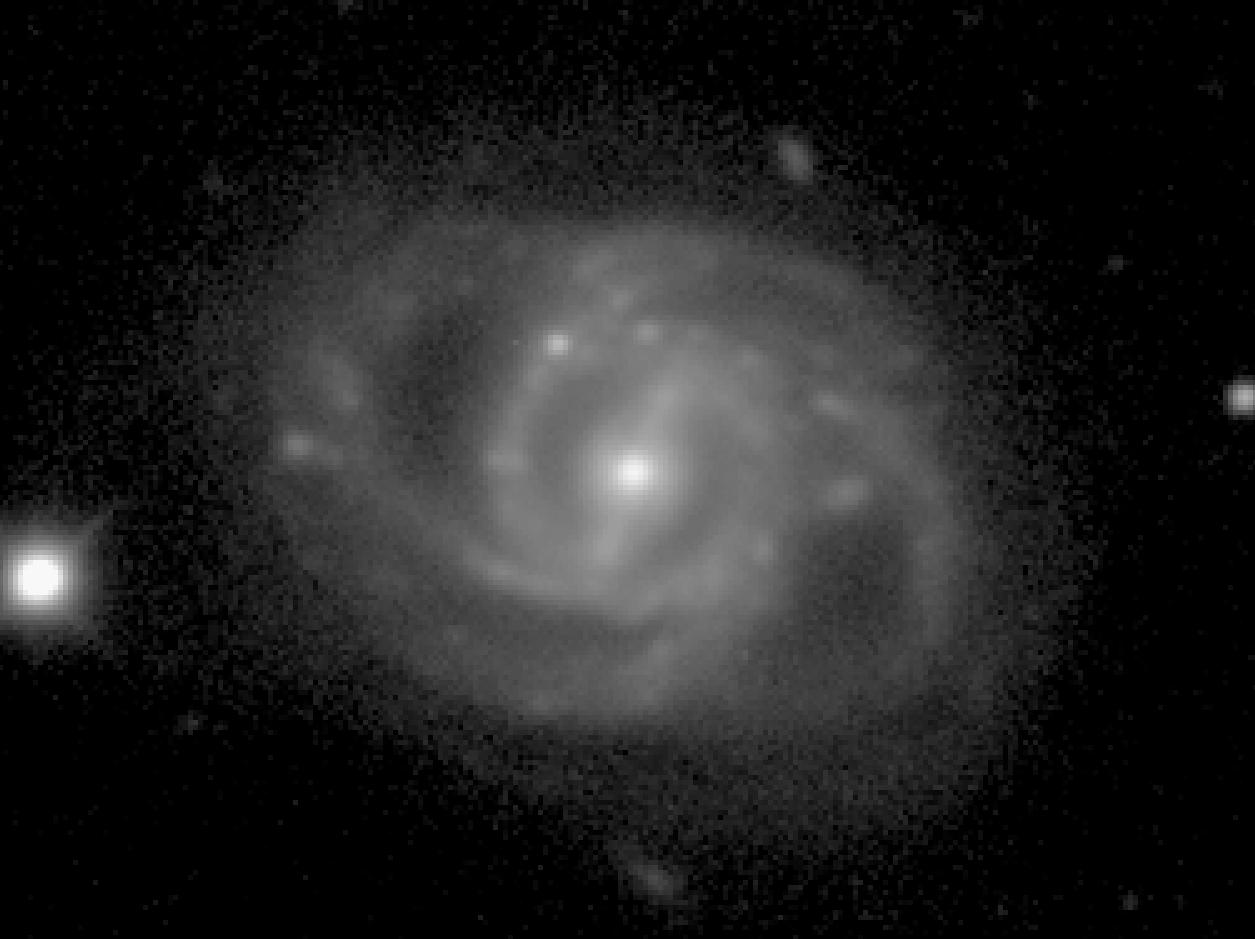

De Vaucouleurs Atlas Type: (R)SB(r)b
Filter: B
Telescope: CTIO 1.5-m
North up , East left
Field Dimensions: 2.3 x 1.7 arcminutes
RC3 Type: SB(r)bc
RSA Type: ------
Surface Brightness Range Displayed: 18.5-26.0 mag per square arcsec
Absolute Blue Magnitude: -20.0
De Vaucouleurs Atlas Description:
ESO 566-24 (Buta and Crocker 1991) is one of the most regular four-armed barred spirals known. Although many early-to-intermediate type SB(r) spirals show vestiges of this structure (e.g., NGC 1433 ), in no other known case are the four arms so equally well-defined and so regularly laid out. ESO 566-24 is in this sense unique. The Sb classification is based on the general patchiness of the structure throughout the arms and inner ring , and the fairly open nature of the outer arms.
An additional feature of interest in ESO 566-24 , noted by Buta et al. (1998), is the presence of a faint ring-like feature encircling the four-armed pattern. Buta et al. (1998) suggests that this feature indicates the actual location of OLR in ESO 566-24 . Using a two-dimensional H-alpha velocity field, Buta et al. (1998) showed that the diffuse object due west of the center in the interarm region is a small companion galaxy having a similar redshift .
Rautiainen, Salo, and Buta (2004) used a near-infrared image to map the gravitational potential in ESO 566-24 , and were able to simulate the four-armed pattern in a system with a moderate amount of dark matter (Figure 4.9). In their best simulation, the pattern is confined to the region between the inner and outer 4:1 resonances. The rarity of regular m = 4 spirals in SB galaxies suggests that the pattern may evolve quickly to a plain (R1' )SB(r) morphology, as in many other cases.
Caption: Comparison between a deprojected image of ESO 566-24 (right, rotated to place the bar in a horizontal orientation) and a numerical simulation from Rautiainen, Salo, and Buta (2004). The model shows both gaseous and stellar particle distributions. A strong nuclear ring made of x2-like orbits is also seen.